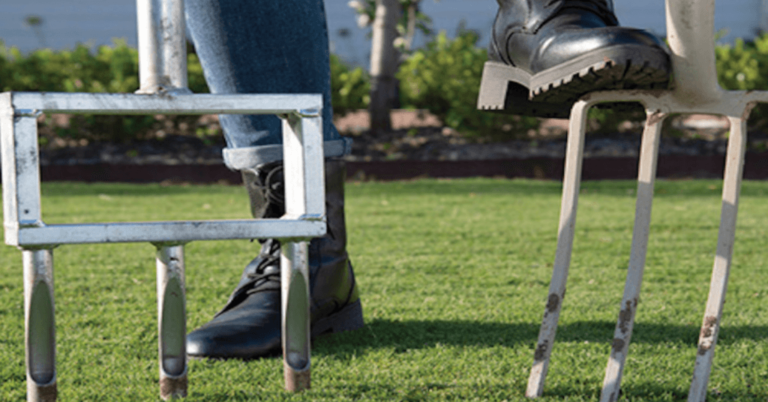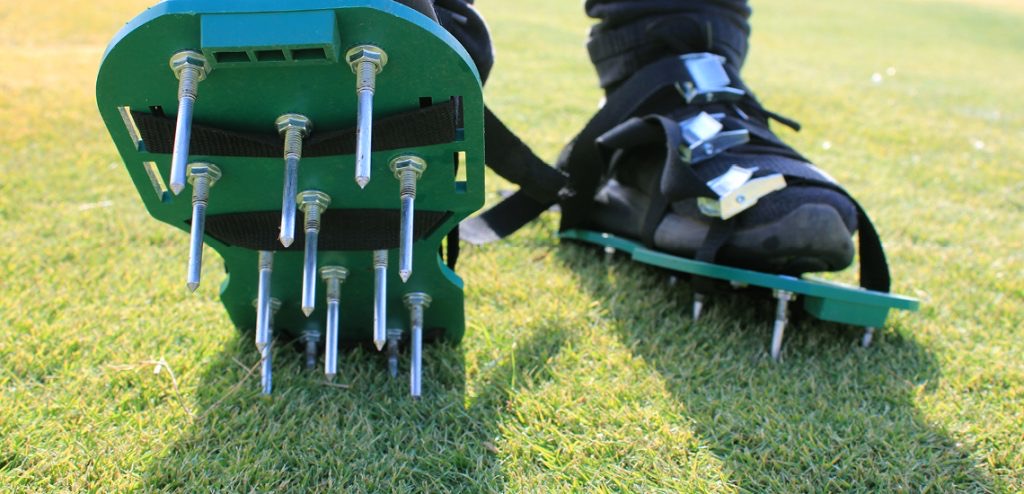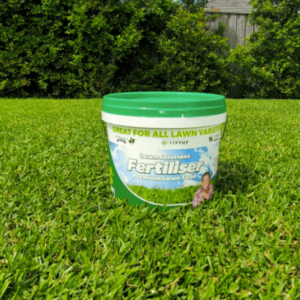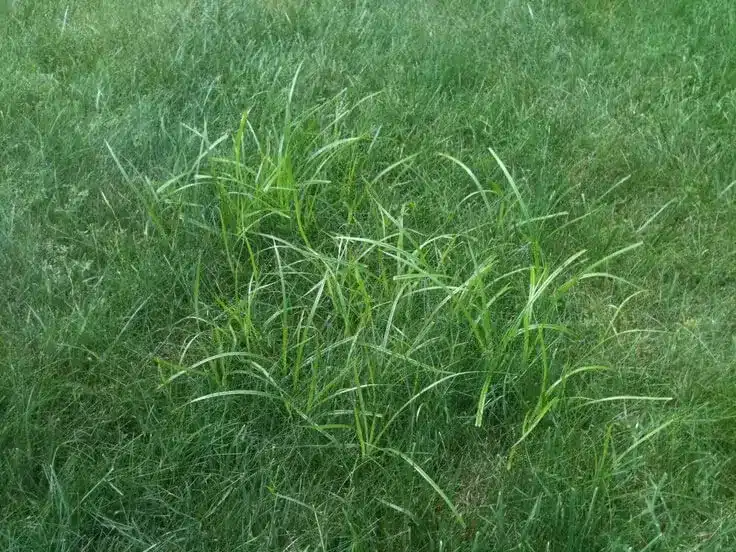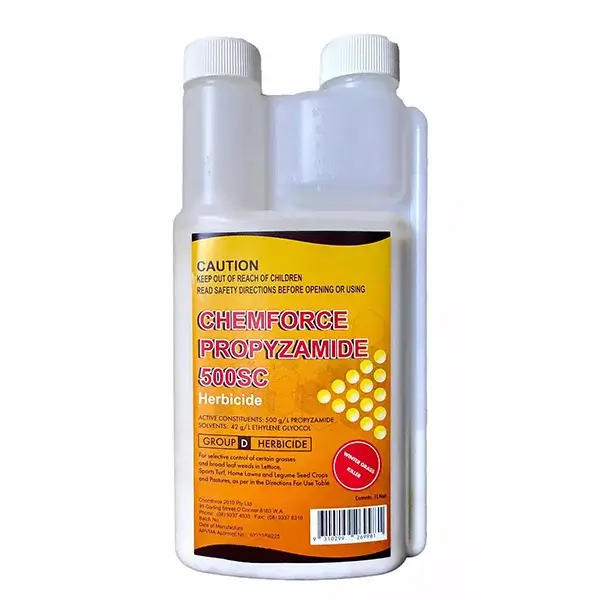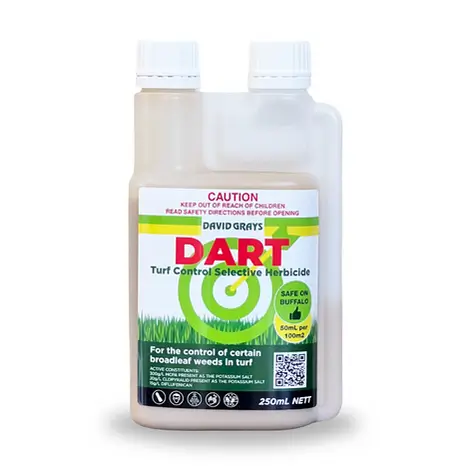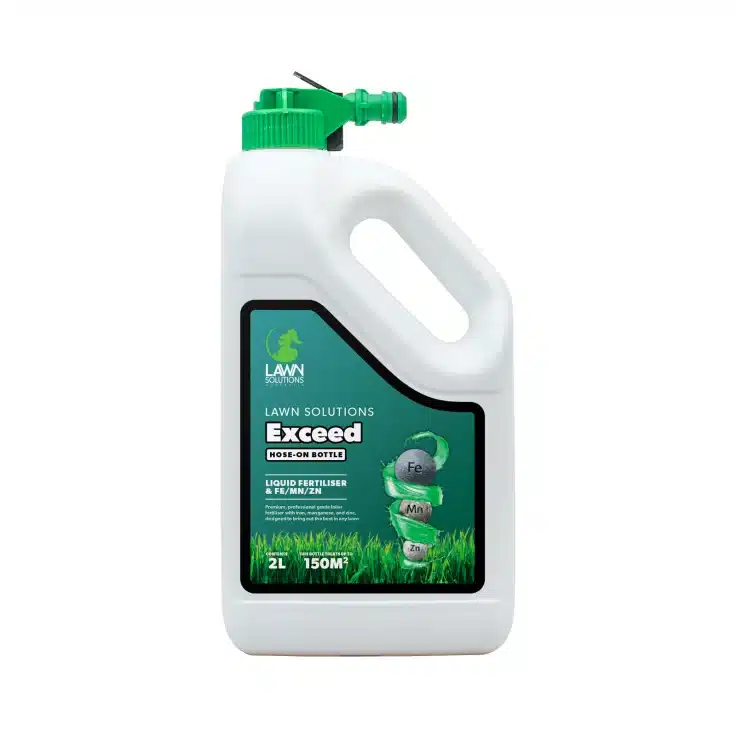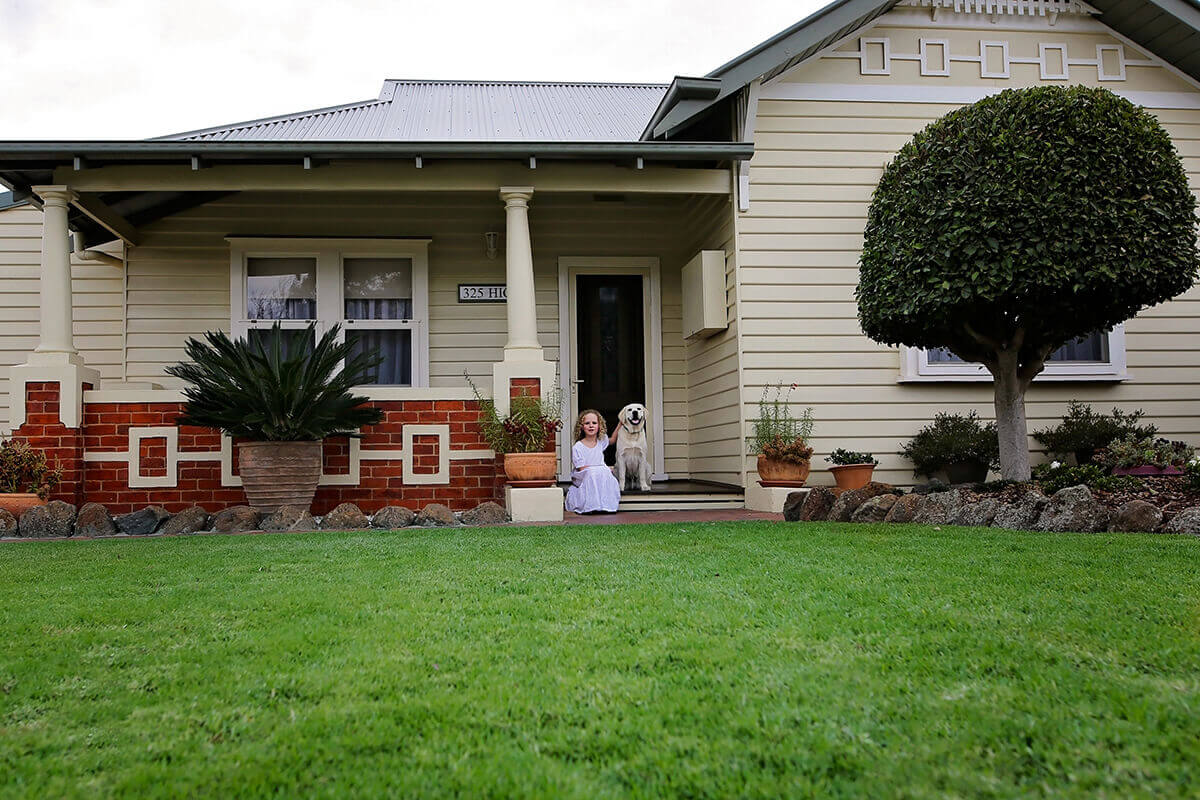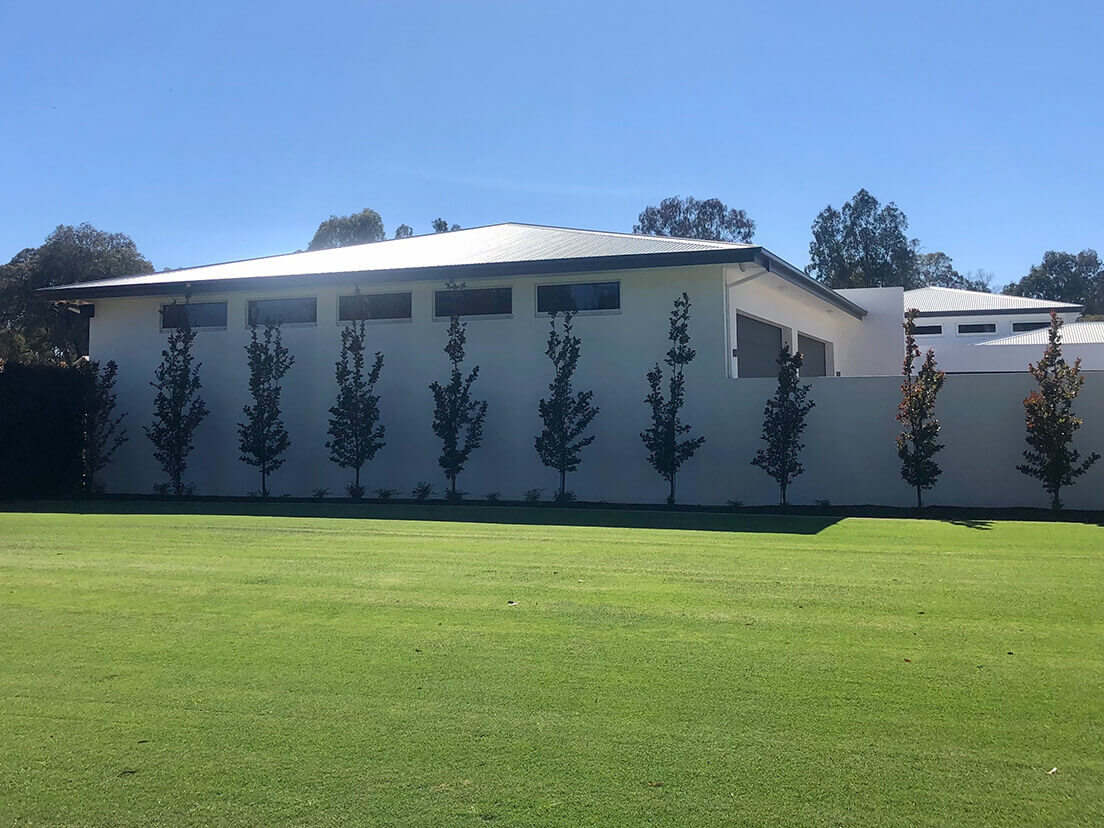Spring has sprung and it’s time to aerate your lawn. But what even is aerating, why is it so important for my lawn and can I do it myself?
These are very important questions for lawn lovers and this blog is dedicated to unpacking the simple but effective lawn care practice of aeration.
What is Lawn Aeration?
Firstly, let’s explain what lawn aeration is. Put simply, it is the perforation of the soil under your lawn to allow air, water and nutrients to penetrate grass roots.
Essentially your lawn needs space to breathe, and aeration is the best way to ensure this occurs.
Why should I Aerate my Lawn?
Lawn aeration helps the roots grow deeply and produce a stronger, more vigorous lawn. The main reason for aerating is to alleviate soil compaction as it limits the amount of nutrients and water able to penetrate the roots of your lawn - which you don’t want. Over time, particularly during a wet, soggy winter or heavy traffic during summer your lawn can become compacted which does not allow the goodness of air, water and nutrients to get down into the grass roots. Compaction is the devil when it comes to lawn care and can lead to nasty issues including poor drainage, bare patches, weed issues, fungal disease and fairy rings.
If you’re worried your lawn has developed a weed issue or has bare patches, visit our helpful lawn care page over on our website. You’ll also find information about common winter weeds and how to kill them here.
How to Aerate my lawn?
Aerating your lawn is easier than it sounds. It simply means giving your lawn some breathing holes. And the good news is you can do it yourself!
If your lawn area is small it can be aerated manually with aerating sandals (sandals with spikes that aerate the lawn as you walk). You can get yourself a pair over at the Coolabah Turf Shop.
DIY Lawn Aeration Tips
If you’re looking for a DIY version of aeration, you can simply use a sturdy garden fork. Just insert the fork into the lawn and wriggle it back and forth to fracture the soil profile.
For more DIY aeration options check out seven make-at-home versions online here.
However you choose to aerate, you need to cover your lawn effectively and aim for spacing between the holes of around 8 – 10cm. You might even need to go over the area twice in a different direction each time to ensure full coverage. If your lawn is on the larger side, you can hire a specialised aerator to tackle the job. A spiked roller is also useful for lawn aeration for incorporating lime, gypsum, or coarse sand into the profile of your grass to improve drainage and pH levels.
You could also consider core aeration, which unlike regular aeration simply punches holes in the ground, removing a plug of soil from your lawn at the same time. Core aeration helps manage thatch build-up by introducing thatch-decomposing microorganisms from the soil to the top of the thatch layer and more importantly, relieves soil compaction. Remember to leave the plugs of turf for at least 1-2 weeks as they will break down and feed nutrients back to your lawn’s roots. We know it’s tempting to clean up but let them feed your lawn and you’ll reap the rewards in the coming weeks and months.
When is the Best Time to Aerate my Lawn?
The best time to aerate warm season grasses, such as soft-leaf buffalo, couch, kikuyu and zoysia is during spring and summer while they are actively growing. When you see the first sign of growth after winter and you have some compacted areas, do not delay in getting out in your aeration sandals!
You can aerate at any time of the year, but keep in mind that it's not a good idea to expose your aerated lawn to cold winter weather without the protection of new growth. Most lawns will be dormant during winter and you won’t see any new growth until spring or summer in some locations, so hold off until the time is right for your lawn. If you’re not sure about local conditions, just touch base with our Coolabah Turf team.
A helpful tip is always try to aerate at the same time you are fertilising or carrying out any other major lawn care practices such as dethatching or top dressing. After rainfall is also a good time, as it will make the perforation process much easier.
For cool season lawns, such as fescue and ryegrass, the same principle applies. With proper care and a lot of water, cool season lawns can grow all year (with the exception of very cold climates) so you can aerate all year round. Again, keep in mind the absolute best times are when you fertilise, dethatch or top dress and also following rain, when soil moisture levels are high.
How Often should I Aerate my Lawn?
Every backyard and lawn is different, and it also depends on who lives at your place. In areas of high foot traffic, pets or even cars parked on the lawn, compaction can become a problem. If this sounds like your place, regular aerating will be important to ensure the ground doesn’t become too hard and it will also help the soil to breathe and the grass to spread. In addition, different soil types require more frequent aeration. Clay soil compacts easily and should be aerated at least once a year. You can aerate a sandy lawn once a year, or once every two years. In harsher climates, aerating twice a year will encourage turf growth and health.
What Else can I do for my Lawn After I Aerate?
After aerating, it is a good time to test your pH and take action if required. Your lawn’s pH affects its ability to absorb the minerals and nutrients needed in order to thrive. A pH that’s less than ideal can mean your lawn isn’t absorbing the minerals and nutrients it needs.
Somewhere between 6 and 7 is the ideal pH range for your lawn and if you’re not sure you can purchase a pH testing kit at most nurseries or local hardware stores.
If your pH is not where you need it, you will need to apply soil additives and conditioners to improve your soil type. A few additives and conditioners are listed below. For more advice, get in touch with our team of turf specialists here.
Tips to Improve your Soil Type:
- Lime (calcium carbonate) helps raise pH and neutralise acidic soil.
- Gypsum is calcium sulfate dihydrate and helps break down clay soils.
- Turf Fertiliser – because aerating allows nutrients to better penetrate, straight after aerating is a perfect time to fertilise your lawn as well.
Now that you’re an aerating expert, you’ll realise it’s a lawn care practice that cannot be overlooked. You’ll also be happy to know that there are hidden benefits of aerating for YOU, as well as your lawn. How? A healthy lawn can drop the temperature of your home’s surroundings, saving energy costs during summer. I think we call that a win, win!
Put simply, the importance of aerating to allow air, water and nutrients to get into the soil cannot be overstated and to ensure you have the best looking lawn in the street, it should certainly be on your regular to-do list this season.

